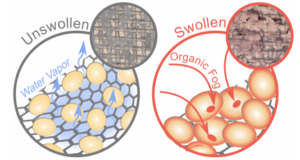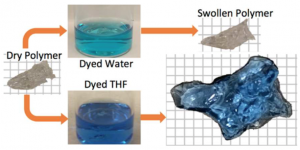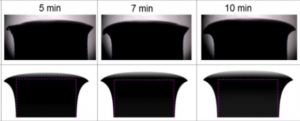Without additional cooling, users of traditional protective gear for chemical weapons can overheat in as little as 20 to 30 minutes. Since ice or batteries for cooling are not always available in operational zones, in a project sponsored by Naval Engineering Education Consortium, we aim to resolve this overheating issue in another innovative way. Specifically, along with US Navy collaborators, we are developing a breathable personal protective garment that self-seals into an impermeable membrane upon exposure to aerosols of hazardous agents. This functionality is achieved through coating of the fabrics with micro-particles of a novel selectively superabsorbing polymer that is indifferent to water, but swells up 30x in number of relevant organic liquids (see Manning et al., I&EC Research 2018 and 2020). We also developed theoretical framework and simulations to quantitatively predict the particle swelling upon impact of micro-droplets (see Phadnis et al., Soft Matter, 2018).





